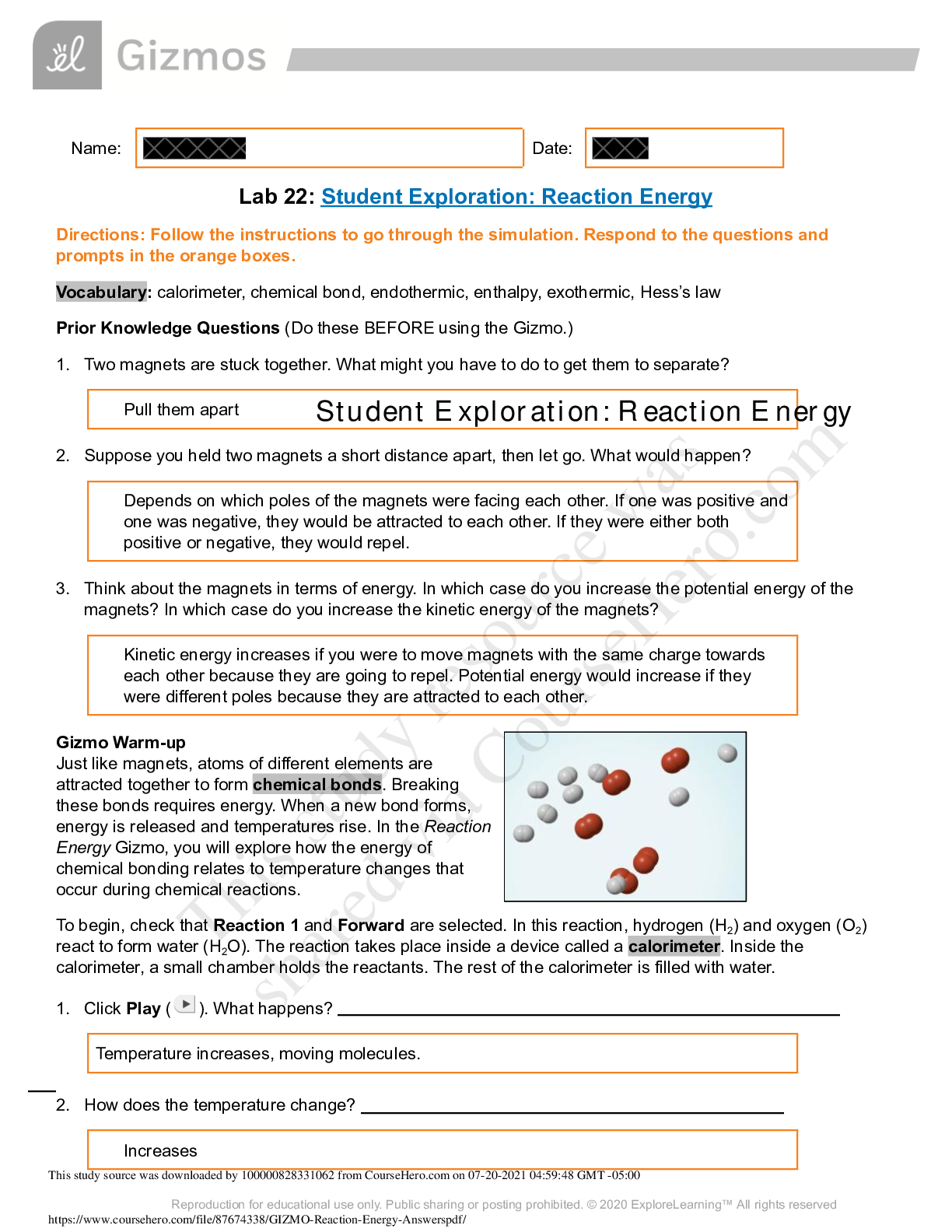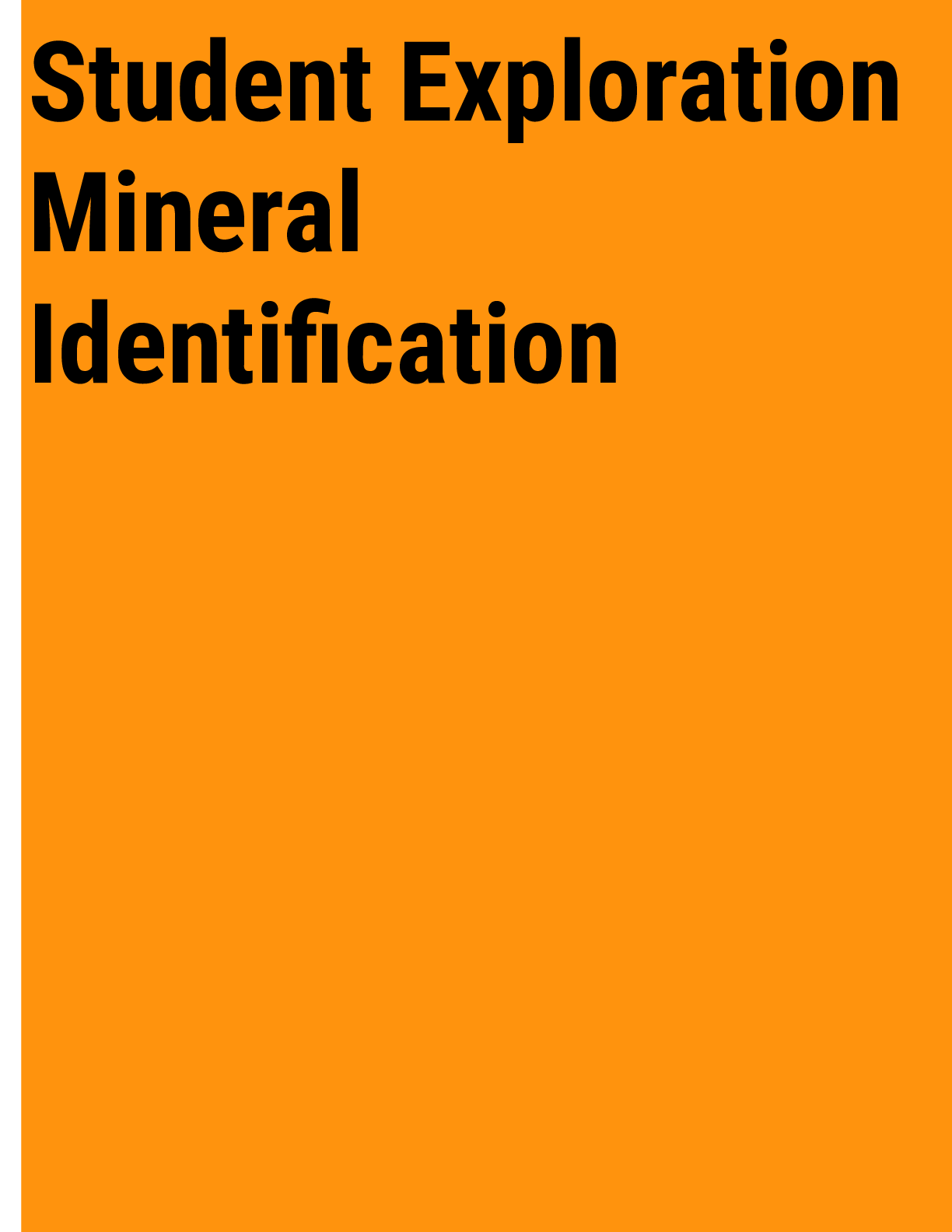Exam (elaborations) Student Exploration Polarity and Intermolecular
Document Content and Description Below
Student Exploration: Polarity and Intermolecular Forces Vocabulary: dipole, dipole-dipole force, dipole-induced dipole force, electronegativity, intermolecular force, ionic bond, London dispersion f... orce, molecule, nonpolar, nonpolar covalent bond, partial charges, polar, polar covalent bond, valence electron Prior Knowledge Questions (Do these BEFORE using the Gizmo.) 1. A big bully is having a tug-of-war with a small child. There is a ball attached to the middle of the rope. Toward whom will the ball move? Big Bully 2. Two equally strong kids are having a tug-of-war. What do you expect to happen to the ball in this situation? The ball will stay in the middle, halfway between them Gizmo Warm-up Just like in a tug-of-war, atoms that are bonded to one another pull on the electrons they share. In the Polarity and Intermolecular Forces Gizmo, you will explore how these opposing forces relate to bond types and the forces between molecules. To begin, drag the Na (sodium) and Cl (chlorine) atoms into the simulation area. Turn on Show valence electrons. A valence electron is found in the outermost energy level of the atom. 1. Click Play ( ). What do you notice? The Na atoms shrink, and the Ci expands. The orange valence electron moves from the Na to the Ci atom. 2. Which atom seems to be pulling more on the sodium’s one valence electron? Chlorine How do you know? The chlorine atom won the tug of war for the valence electron. 3. What happens to the colors of the simulated atoms, and what does this indicate? The Na atoms turn blue, indicating a positive charge the Ci atom turns red indicating a negative charge. [Show More]
Last updated: 2 years ago
Preview 1 out of 8 pages

Buy this document to get the full access instantly
Instant Download Access after purchase
Buy NowInstant download
We Accept:

Reviews( 0 )
$10.00
Can't find what you want? Try our AI powered Search
Document information
Connected school, study & course
About the document
Uploaded On
Feb 16, 2022
Number of pages
8
Written in
Additional information
This document has been written for:
Uploaded
Feb 16, 2022
Downloads
0
Views
130




.png)



.png)




